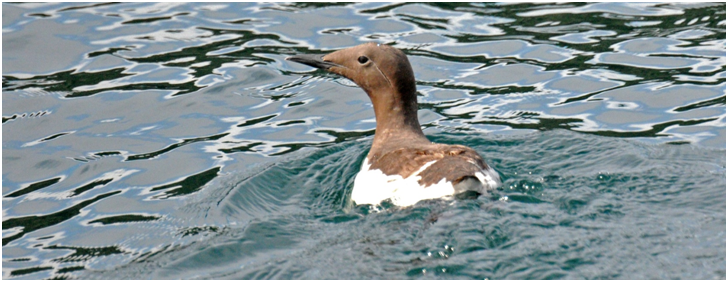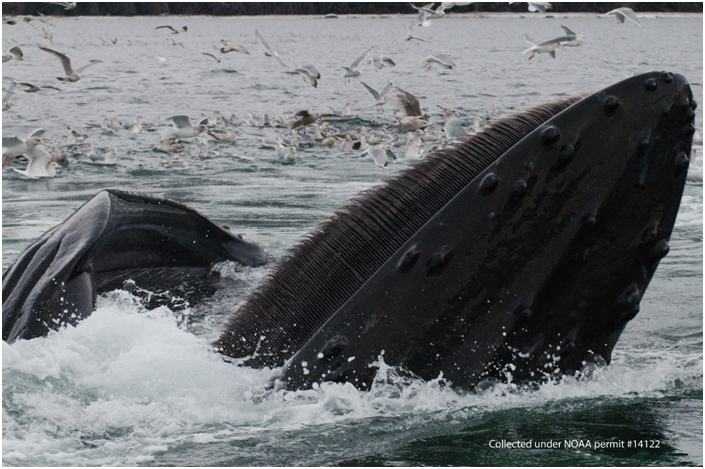Here! Cries flock of gulls
to baleen breach amidst white foam
Tiny fish abound
Marine mammals and birds at the top of the pelagic (open ocean) food chain depend on the health and availability of their prey, which, depending on species, includes plankton, fish, and other marine mammals. Killer whales, many marine bird species, and fish species (such as herring) in this ecosystem were injured by the Exxon Valdez oil spill. Some of these species have recovered, others are continuing to recover, several are not recovering, and the recovery of some species is unknown. In addition to impacts like an oil spill, pelagic species are sensitive to changes in oceanographic conditions. Prey species such as herring, capelin, and sand lance (collectively referred to as forage fish) require favorable oceanographic conditions (environmental drivers such as water temperature, salinity, dissolved oxygen, nutrient content, and water column stability) to survive and thrive. Knowing how forage species interact with their environment is critical to understanding the recovery of predators in pelagic food webs and their long-term health.
Why are we monitoring?
Long-term monitoring allows us to distinguish between natural and anthropogenic changes by providing important information related to the ability of pelagic species to recover from events such as an oil spill, how predator and prey species interact, and the relationships between oceanographic conditions and the health and population dynamics of pelagic species.

COMMON MURRES EXPERIENCED A TREMENDOUS DIE-OFF IN ALASKA IN 2015 AND EARLY 2016. MURRES SPEND MOST OF THE YEAR AT SEA, RETURNING TO COLONIES ON BARE ROCK LEDGES IN THE SPRING AND SUMMER TO NEST. (PHOTO CREDIT SARAH SHOEN)
How are we monitoring?
Monitoring pelagic species requires a variety of methods. We survey seabirds by using boat-based strip transects. We identify humpback whales based on their fluke patterns, track their movements, and when whales feed we collect the fish and krill nearby to identify diet preferences. Killer whale monitoring includes identifying individuals based on body markings, track movements of pods based on satellite tags, collecting skin and blubber biopsy samples for chemical analysis and genetics, and sampling fish and mammal prey from kill sites. We sample forage fish through hydroacoustic (sonar technology used to measure fish and other organisms underwater), trawl, and aerial surveys.



